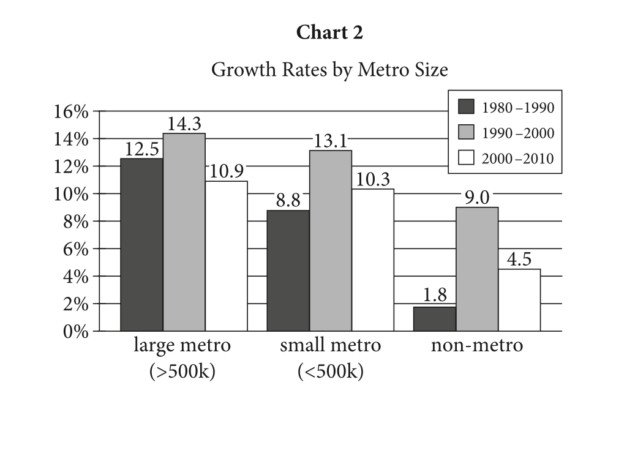Can You Answer These 5 Reading SAT Questions? [Quiz]

Every high school student who intends to take the SAT has probably heard that the best preparation for the SAT is the test itself. While you can study the material and learn the strategies all you want, the only way to really know what to expect on test day is to take the test. This is also probably the reason why most students who take the test more than once experience the greatest score increase between their first and second test administrations.
The easiest way to get practice taking the SAT is to use official practice tests produced by the College Board, the same company that administers the real SAT. As you do so, you’ll get a better idea of what the real test is like.
In this post, we break down five questions from an official practice SAT released by the College Board. For each one, we’ll discuss what type of question it is, what exactly the question is asking you to do, and how to go about solving it. Then we’ll explain the correct answer choice and why the other choices are incorrect.
Test Yourself With These Five Reading SAT Questions
To get started, read these passages and the questions that follow them. Keep in mind, though, that some passages included here are not as long as the passages that would typically be presented on the exam, so don’t try to use them to gauge your pacing. An actual Reading SAT passage would be between 500-750 words.
As you are reading, be sure to pay particular attention to the brief introduction at the beginning if one is included. Many students are tempted to skip this part, but it sometimes holds information integral to understanding the questions that follow.
Also, try to practice your skimming as you read. On the actual SAT, it’s unlikely that you will be able to read every word in much depth.
Another tip to employ as you read passages such as these is deep interest engagement. Sometimes, the Reading SAT can be — put kindly — a little dry. If that’s the case, you need to convince yourself that it’s actually very interesting. Try to really pump yourself up before you read it. With a little practice, this can become a very worthwhile trick.
PASSAGE 1
This passage is adapted from Alan Ehrenhalt, The Great Inversion and the Future of the American City. ©2013 by Vintage. Ehrenhalt is an urbanologist — a scholar of cities and their development. Demographic inversion is a phenomenon that describes the rearrangement of living patterns throughout a metropolitan area.
We are not witnessing the abandonment of the suburbs, or a movement of millions of people back to the city all at once. The 2010 census certainly did not turn up evidence of a middle-class stampede to the nation’s cities. The news was mixed: Some of the larger cities on the East Coast tended to gain population, albeit in small increments. Those in the Midwest, including Chicago, tended to lose substantial numbers. The cities that showed gains in overall population during the entire decade tended to be in the South and Southwest.
But when it comes to measuring demographic inversion, raw census numbers are an ineffective blunt instrument. A closer look at the results shows that the most powerful demographic events of the past decade were the movement of African Americans out of central cities (180,000 of them in Chicago alone) and the settlement of immigrant groups in suburbs, often ones many miles distant from downtown.
Central-city areas that gained affluent residents in the first part of the decade maintained that population in the recession years from 2007 to 2009. They also, according to a 2011 study by Brookings, suffered considerably less from increased unemployment than the suburbs did. Not many young professionals moved to new downtown condos in the recession years because few such residences were being built.
But there is no reason to believe that the demographic trends prevailing prior to the construction bust will not resume once that bust is over. It is important to remember that demographic inversion is not a proxy for population growth; it can occur in cities that are growing, those whose numbers are flat, and even in those undergoing a modest decline in size.
1. Which choice best summarizes the first paragraph of the passage?
This is a broad question that asks you to summarize a large chunk of reading. To do so, you should begin by asking yourself what the main point of the paragraph is. You can find a helpful hint in the introduction, where the definition of demographic inversion is given. This indicates that demographic inversion will be an important part of the passage that follows.
Also look at the first and last sentences of the paragraph for help. The first sentence specifically states that we are not witnessing a mass resettlement back to cities. The last sentence talks about the distinct difference between population growth and demographic inversion. Now, let’s put this information to use.
We can ultimately eliminate answer choices A, B, and D because none mention demographic inversion, which we know is a primary focus of the passage. Each can also be eliminated for another reason. Choice A mentions specifics from the 2010 census that are not consistent with the passage. Choice B makes an assumption that the author might likely agree with, but it is not a point ever made directly in the passage. Choice D cites data going back to the year 2000, which is never mentioned in the passage.
2. In the last line, “flat” is closest in meaning to...
This question asks you to use context to determine the meaning of a word in the passage. To come up with the answer, first you’ll need to locate the word. We usually recommend circling or underlining the word once you’ve found it, so that’s it’s easier to return to when you scroll back and forth between the passage and the question.
Now, try substituting each word from the answer choices to see which one works as a synonym, without changing the meaning of the sentence. By using the clues around it, you can see that in this case, the word “flat” means unchanging. Even if you weren’t sure, you can think of its place in the list of population trends. The phrase before it talks about populations that are growing, and the phrase after talks about populations that are declining. The phrase in between, including the word ‘flat,’ must therefore refer to populations that are staying the same.
The correct answer is A. Of the answer choices, the only one that could refer to a population that is unchanging is static.
Chart 2

3. Chart 2 suggest which of the following about population in the 1990s?
This question asks you to interpret an informational graphic. About 10% of the Reading SAT questions will relate to informational graphics, and many, like this one, will not require you to use information from the passage in order to interpret the graphic.
Begin by reading the graph carefully. Read the title and all labels. Have a general idea of what it depicts. In this case, the graph shows population growth rates in various metro sizes during three different decades.
If you skim the answer choices, you will see that each answer choice refers to the 1990s. This lets you know that you should locate the data on the graph that corresponds to this time period.
On this graph, the light gray bar in the middle of each metro size shows the 1990s. You will notice that for each metro size, the bar depicting population growth in the 1990s is the tallest. So, you can surmise that the population in the 1990s increased overall, not only in a specific metro size.
Now, look at the answer choices again. With this knowledge, you can immediately eliminate choices A, B, and C since all three insinuate that population growth fell in another specific area during the 1990s.
In fact, population growth in communities of every size was highest in the 1990s. For this reason, the correct answer is D.
PASSAGE 2
This passage is adapted from Emily Anthes, Frankenstein’s Cat. ©2013 by Emily Anthes.
When scientists first learned how to edit the genomes of animals, they began to imagine all the ways they could use this new power. Creating brightly colored novelty pets was not a high priority. Instead, most researchers envisioned far more consequential applications, hoping to create genetically engineered animals that saved human lives. One enterprise is now delivering on this dream. Welcome to the world of “pharming,” in which simple genetic tweaks turn animals into living pharmaceutical factories.
Many of the proteins that our cells crank out naturally make for good medicine. Our bodies’ own enzymes, hormones, clotting factors, and antibodies are commonly used to treat cancer, diabetes, autoimmune diseases, and more. The trouble is that it’s difficult and expensive to make these compounds on an industrial scale, and as a result, patients can face shortages of the medicines they need.
Dairy animals, on the other hand, are expert protein producers, their udders swollen with milk. So the creation of the first transgenic animals — first mice, then other species — in the 1980s gave scientists an idea: What if they put the gene for a human antibody or enzyme into a cow, goat, or sheep? If they put the gene in just the right place, under the control of the right molecular switch, maybe they could engineer animals that produced healing human proteins in their milk. Then doctors could collect medicine by the bucketful.
Throughout the 1980s and ’90s, studies provided proof of principle, as scientists created transgenic mice, sheep, goats, pigs, cattle, and rabbits that did in fact make therapeutic compounds in their milk. At first, this work was merely gee-whiz, scientific geekery, lab-bound thought experiments come true. That all changed with ATryn, a drug produced by the Massachusetts firm GTC Biotherapeutics. ATryn is antithrombin, an anticoagulant that can be used to prevent life-threatening blood clots.
The compound, made by our liver cells, plays a key role in keeping our bodies clot-free. It acts as a molecular bouncer, sidling up to clot-forming compounds and escorting them out of the bloodstream. But as many as 1 in 2,000 Americans are born with a genetic mutation that prevents them from making antithrombin.
These patients are prone to clots, especially in their legs and lungs, and they are at elevated risk of suffering from fatal complications during surgery and childbirth. Supplemental antithrombin can reduce this risk, and GTC decided to try to manufacture the compound using genetically engineered goats.
To create its special herd of goats, GTC used microinjection, the same technique that produced GloFish and AquAdvantage salmon. The company’s scientists took the gene for human antithrombin and injected it directly into fertilized goat eggs. Then they implanted the eggs in the wombs of female goats. When the kids were born, some of them proved to be transgenic, the human gene nestled safely in their cells.
The researchers paired the antithrombin gene with a promoter (which is a sequence of DNA that controls gene activity) that is normally active in the goat’s mammary glands during milk production. When the transgenic females lactated, the promoter turned the transgene on and the goats’ udders filled with milk containing antithrombin.
All that was left to do was to collect the milk, and extract and purify the protein. Et voilà — human medicine! And, for GTC, liquid gold. ATryn hit the market in 2006, becoming the world’s first transgenic animal drug. Over the course of a year, the “milking parlors” on GTC’s 300-acre farm in Massachusetts can collect more than a kilogram of medicine from a single animal.
4. The primary purpose of the passage is to
This question asks you to draw a conclusion about the purpose of an entire passage. A quick review of the answer choices shows you that your choices for the passage’s purpose are present background, evaluate research, summarize research, or explain a branch of scientific study.
Answer choices B and C can quickly be eliminated because the passage does not focus on any scientific research in depth. Answer choice D can also be eliminated because the subject of the passage, pharming, is not a branch of scientific study. Instead, it is a medical breakthrough.
That means that the correct answer is A, the only choice that correctly classifies “pharming” and summarizes the passage’s description of it.
5. According to the passage, which of the following is true of antithrombin?
This is a precise question that asks you to locate very specific information in the passage. Never try to answer a question like this from memory, since most answer choices will be somehow relevant to the passage, with small incorrect details included to trip you up.
To answer this question, locate the discussion of antithrombin, or ATryn, in the passage and review it. You will see that a genetic mutation prevents some people from producing antithrombin, so you can eliminate answer choice B, which states that antithrombin itself is a genetic mutation. You will also find in the passage that researchers paired antithrombin with a promoter that is normally active in a goat’s mammary glands. Therefore, you can eliminate answer choices C and D.
This means that the correct answer choice is A, as also reinforced by lines 42-44, which state that antithrombin “acts as a molecular bouncer, sidling up to clot-forming compounds and escorting them out of the bloodstream.”
What does the reading SAT consist of?
The Reading SAT is one of two tests that combine to form the greater Evidence-Based Reading and Writing Section of the SAT. The Reading SAT consists of 52 multiple-choice questions, which you’ll have 65 minutes to complete. These questions are all based on reading passages that are between 500-750 words. Sometimes passages are presented in pairs, in which case they will total 500-750 words.
Passages are also sometimes presented with informational graphics such as tables, graphs, maps, or charts. You’ll need to be able to interpret these graphics, but no math will be required on this section of the SAT.
The Reading SAT never tests existing knowledge. Instead, it assesses your basic reading comprehension and analysis skills. Specifically, you will need to be able to read critically and apply context clues. There is no longer a separate vocabulary component to the Reading SAT, but you will still be asked to determine the meaning of words as they are used in the passages.
How did you do on these SAT Reading questions? Don’t worry if there’s room for improvement, there are plenty of free study tools available. Here are some of our favorites:
-
-
- The College Board Daily Practice SAT app that offers one daily practice question, an answer hint, and answer explanations to help you learn from your mistakes
-
-
-
- Free, official study resources through Khan Academy
-
-
-
- Finally, don’t miss CollegeVine’s Ultimate Guide to the New SAT Reading Test, which provides an overview of test content and format along with top strategies for acing the test
-
Preparing for the SAT? Download our free guide with our top 8 tips for mastering the SAT.
To learn more about the SAT, check out these CollegeVine posts:
Want to know how your SAT score impacts your chances of acceptance to your dream schools? Our free Chancing Engine will not only help you predict your odds, but also let you know how you stack up against other applicants, and which aspects of your profile to improve. Sign up for your free CollegeVine account today to gain access to our Chancing Engine and get a jumpstart on your college strategy!




